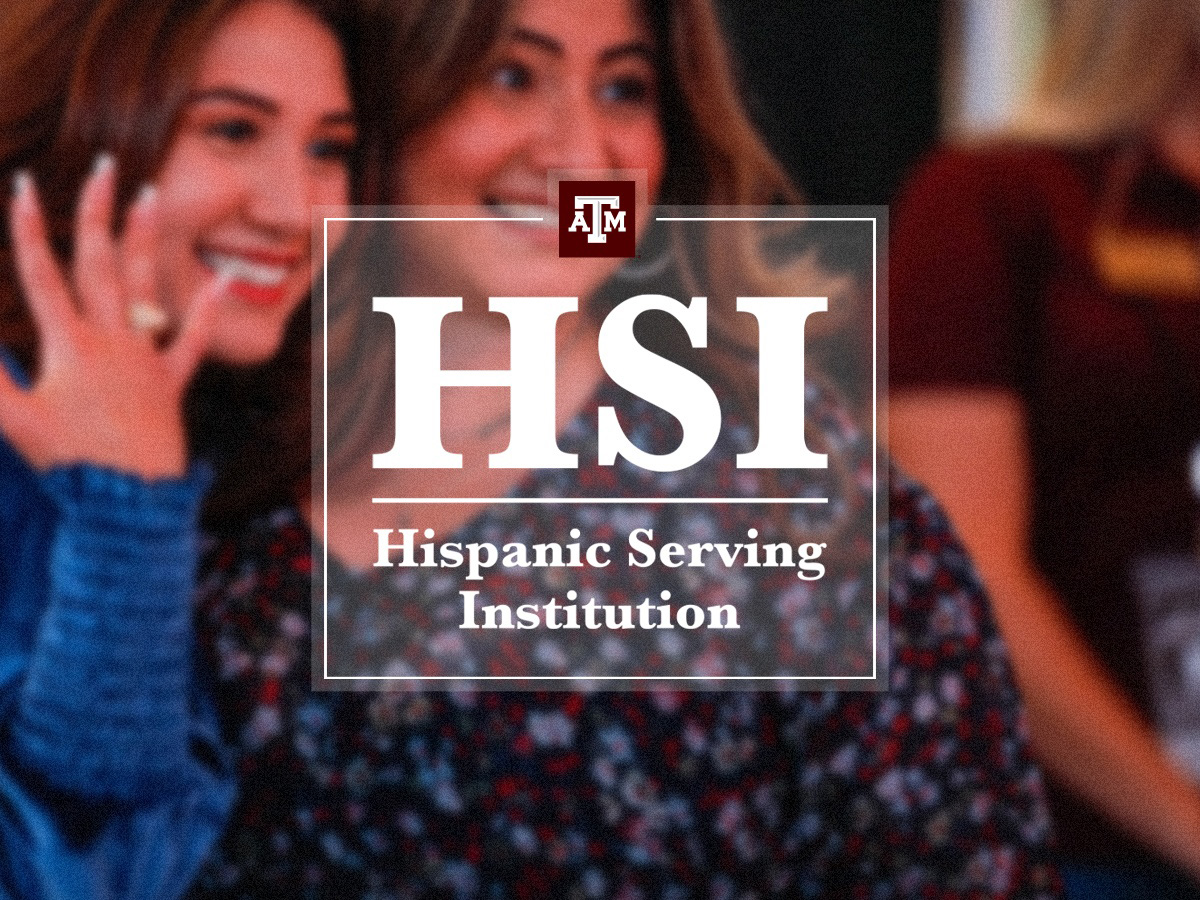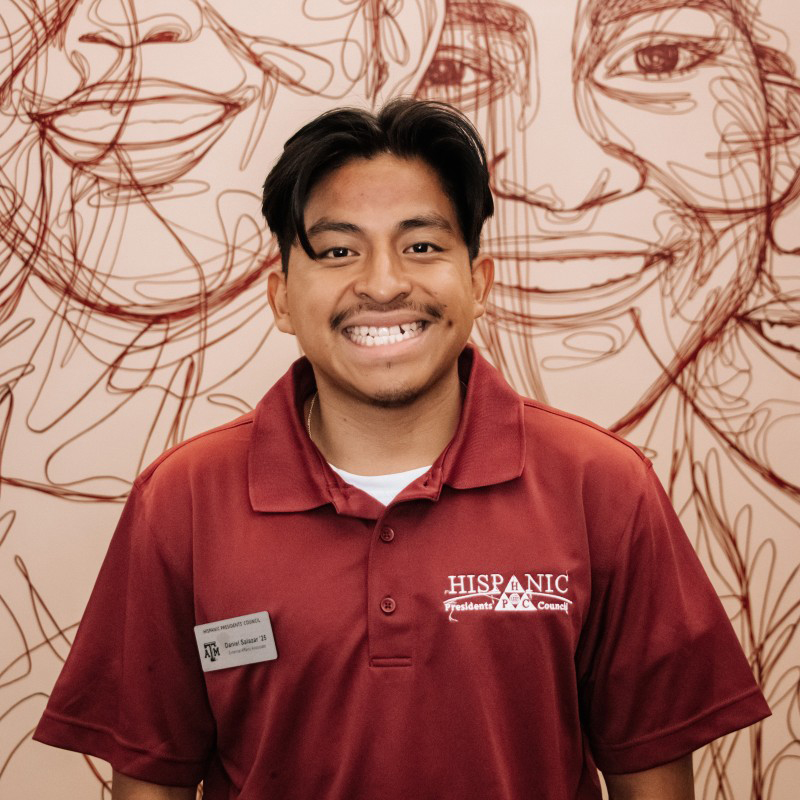
On March 1, 2022, Texas A&M University achieved a significant milestone, earning federal Hispanic Serving Institution (HSI) designation from the United States Department of Education. Six months later on Sept. 1, 2022, the College of Arts and Sciences officially launched and currently is embarking on its sophomore year as the academic heart of the university.
As Texas A&M and the College of Arts and Sciences both acclimate to these developments, campus stakeholders share how the HSI designation has affected them and their efforts to best live up to its potential.
“The HSI designation validated what I saw on the ground, which is that people at Texas A&M value studying and learning about the Latinx experience, that Latinos and Latinas have made a mark on Texas A&M and shaped it in positive ways,” said Dr. Nancy Plankey-Videla, an associate professor in the Department of Sociology and director of its Latino/a and Mexican American Studies program. “I think a priority for the HSI designation should be deciding what it means to serve the Latinx population and all underserved groups.”
Texas A&M needed to have at least 25% of its undergraduate, full-time equivalent student enrollment be Hispanic or Latino, defined by the United States Office of Management and Budget as “a person of Cuban, Mexican, Puerto Rican, South or Central American, or other Spanish culture or origin, regardless of race.” The College of Arts and Sciences alone hosts nearly 5,000 Hispanic students out of the 17,000 enrolled overall, according to Texas A&M’s Accountability site as of fall 2022.

As such, students in the College of Arts and Sciences are encouraged to work within their communities to help each other grow into their academic success. For example, honors psychology major Daniel Salazar ’25 has been active in the Department of Psychological and Brain Sciences, the college and across the campus in helping other students adjust to Texas A&M and college life.
“I wanted to be at Texas A&M because I heard a lot of positive anecdotes about the Aggie Network and how the faculty and alumni try to facilitate success for all students,” Salazar said. “For me personally, my freshman year was a bit difficult. Through being the president of the Hispanic Presidents’ Council, an external affairs officer in Council for Minority Student Affairs and continuing my involvement with the Freshman in Liberal Arts Reaching Excellence, I have been able to serve a variety of people. I want to continue to serve the Hispanic/LatinX community to show prospective students that there are organizations and people here who want to help them find a home away from home.”
The HSI designation can help universities provide more resources to faculty and staff to serve students. A key benefit of this federal designation is that campus stakeholders are eligible for funding specifically for HSIs from a variety of sources — including the Department of Education, Department of Defense, National Endowment for the Humanities, National Science Foundation, Department of Agriculture and more — for the purpose of improving enrollment and graduate rates for Hispanic students. A key concept in accomplishing this endeavor is “servingness.”
“Servingness” is defined as a “multidimensional and conceptual way to understand what it means to move from simply enrolling Latinx students to actually serving them.” Because there is no one way to federally define “servingness,” universities form their own initiatives and programs to achieve “servingness.”
Texas A&M has set a list of priorities inspired by the HSI designation, with topics ranging from developing translational research and expanding transformational education to fostering a sense of belonging and strengthening relationships and affiliations with state and national bodies, amongst others. Within the College of Arts and Sciences, Dr. Darrel Wanzer-Serrano, an associate professor in the Department of Communication and Journalism who has been involved in Texas A&M’s efforts to follow up with the HSI designation, has been appointed as director of the Race and Ethnic Studies Institute (RESI). RESI has organized a new HSI Working Group, which held its first meeting in September.
“As the largest HSI with the highest research expenditures of any HSI in the country, I think we have an ethical obligation to take the question related to “servingness” seriously and to engage in answers that are intentional about how we advance an HSI culture and identity at Texas A&M,” Wanzer-Serrano said. “I think as we’re emerging as a research-intensive HSI, we have a real opportunity to consider the ways in which we’re serving our Latinx and other underserved students. How do we identify the opportunity gaps that hinder student success, and what can we do to solve them?”
Yes, HSI is about having a 25% Latinx student enrollment, but it’s also about serving all the underrepresented groups. How are we making sure that they feel like Aggies and that they get the experience and education they deserve? We should be inclusive. Being an Aggie means including all Aggies.
Another action taken regarding the HSI designation is through the appointment of Dr. Omar Rivera, an associate professor in the Department of Philosophy, as director of HSI Initiatives within the College of Arts and Sciences. In this role, Rivera assists in designing, coordinating and managing HSI-related programs, with primary focus on faculty development and student success. In addition, Rivera has been organizing an HSI Lab, a body of experts gathering to help define Texas A&M’s “servingness” by informing best practices, establishing initiatives and producing research.
“The point of the HSI designation is to reflect on being a better academic institution,” Rivera said. “We need that reflective moment, that data- and research-driven moment to answer the question of ‘how do we create the right conditions so that every student has equity of access to higher education and academic success?’ It’s not a simple question. We in the College of Arts and Sciences are well positioned to take this on because of our interdisciplinary nature, the majors and minors we have and the faculty who are invested in serving our student population. We have so much talent here that what we should be able to do, especially as an R1 institution and one of the largest universities in the country, could possibly have an impact on thousands and thousands of students and their communities.”
As Texas A&M and the College of Arts and Sciences venture further into defining “servingness” and making best use of the HSI designation, students, faculty and staff continue to work together to form a thriving community of scholars that supports all Aggies.
“Yes, HSI is about having a 25% Latinx student enrollment, but it’s also about serving all the underrepresented groups,” Plankey-Videla said. “How are we making sure that they feel like Aggies and that they get the experience and education they deserve? We should be inclusive. Being an Aggie means including all Aggies.”

